How a Legal Tech Founder Automated the First Mile of Casework Without Code
Introduction
In many law firms and legal aid organizations, the process of handling new client cases is still frustratingly manual. Clients often fill out long, confusing forms, miss key details, and end up in back-and-forth emails just to clarify the facts. On the attorney’s side, junior staff spend hours digging through intake notes, trying to piece together a coherent case summary — only to redo the work when preparing internal memos or formal briefs.
Thomas, a non-technical founder with a background in legal advocacy, set out to solve a painful industry problem using AI — without hiring a developer.
Drawing on his frontline experience in client services and legal tech, he asked a bold question:
What if an AI assistant could handle intake, follow up with smart questions, and draft the first version of every memo — all before a lawyer lifts a finger?
Thomas met Momen at LLM x LAW hackathon. This time, he found the way to build his answer this time.
Background: Intake Was Slow, Repetitive, and Painful
For most legal teams, the "first mile" of every case is where time goes to die. Intake forms are vague. Follow-up questions are manual. Document drafting starts from scratch — every time.
Thomas knew that AI could help — but he didn’t want to spend months building an app or hire an engineering team. He needed:
A simple way for clients to share their story clearly
A way for AI to handle missing info automatically
An interface for lawyers to review, ask more questions, and generate formal docs fast
The Solution: An AI-Powered Legal Assistant Built on Momen
Using Momen, Thomas built an workable MVP that proved his idea. He created a system where:
Clients submit their case through intake form.
AI automatically follows up to clarify missing or ambiguous details — just like a trained intake assistant would.
Lawyers review enriched case summaries, chat with AI, and generate documents like memos and briefs
Once finalized, these documents can be previewed, edited, rendered, and exported as PDFs — ready for internal review or submission.
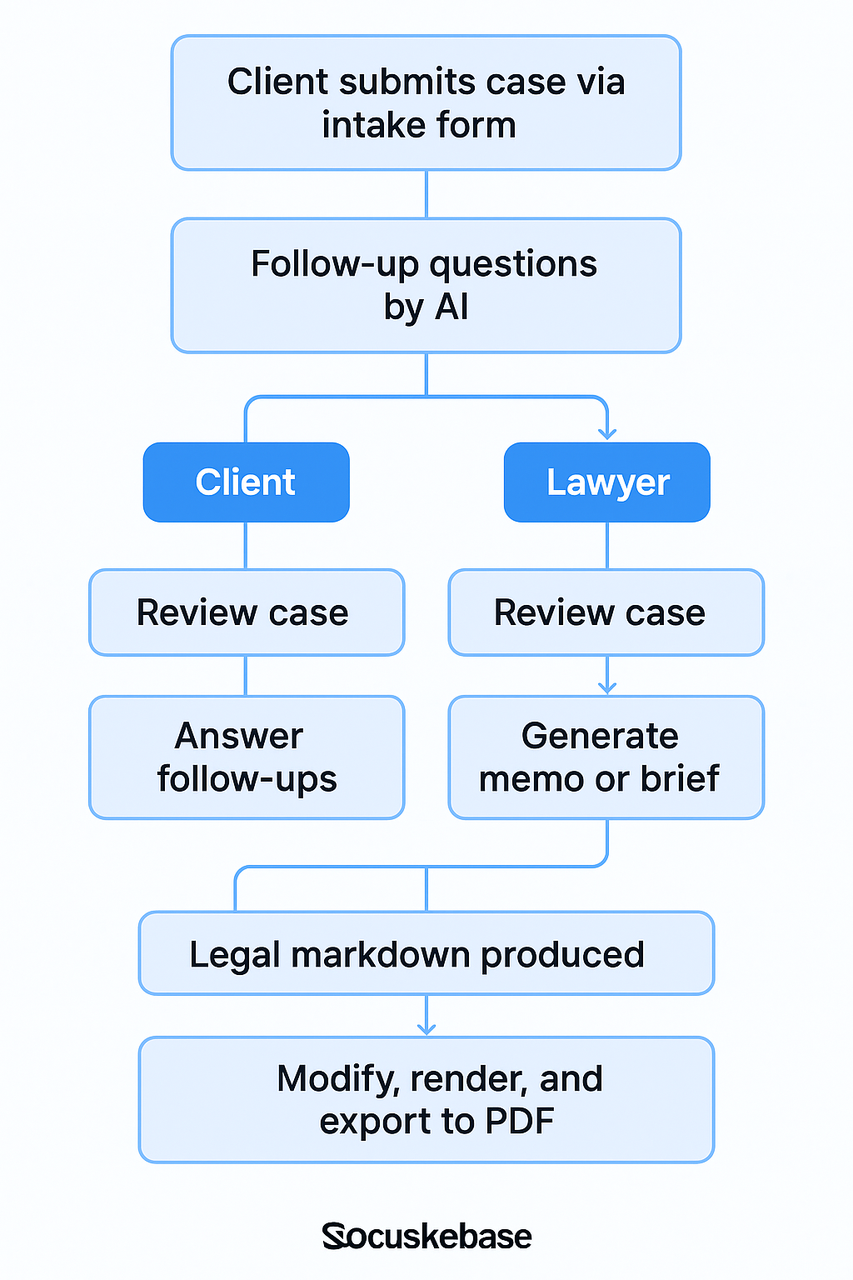
Inside the App: A Seamless Experience for Both Sides
Here’s how the system works, reimagined from both the client and lawyer perspectives:
For Clients:
Log in to the portal (with email verification).
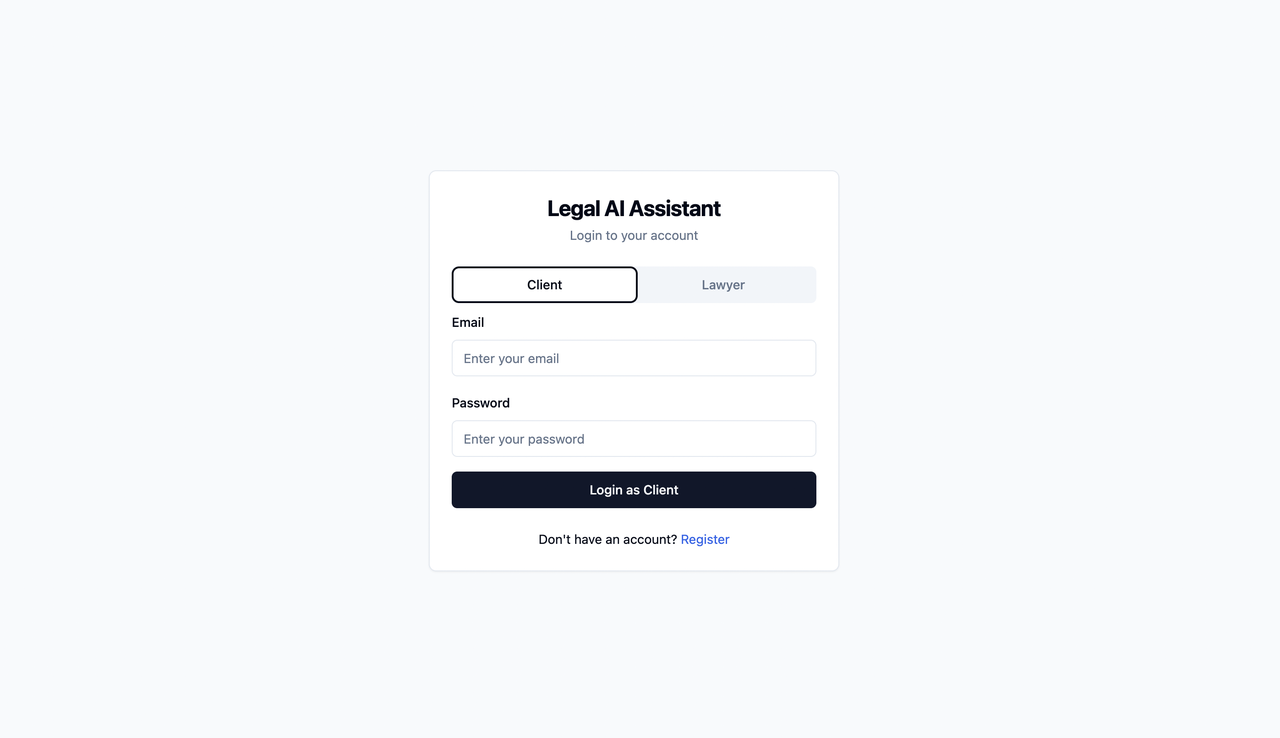
Start a new case via intake form.
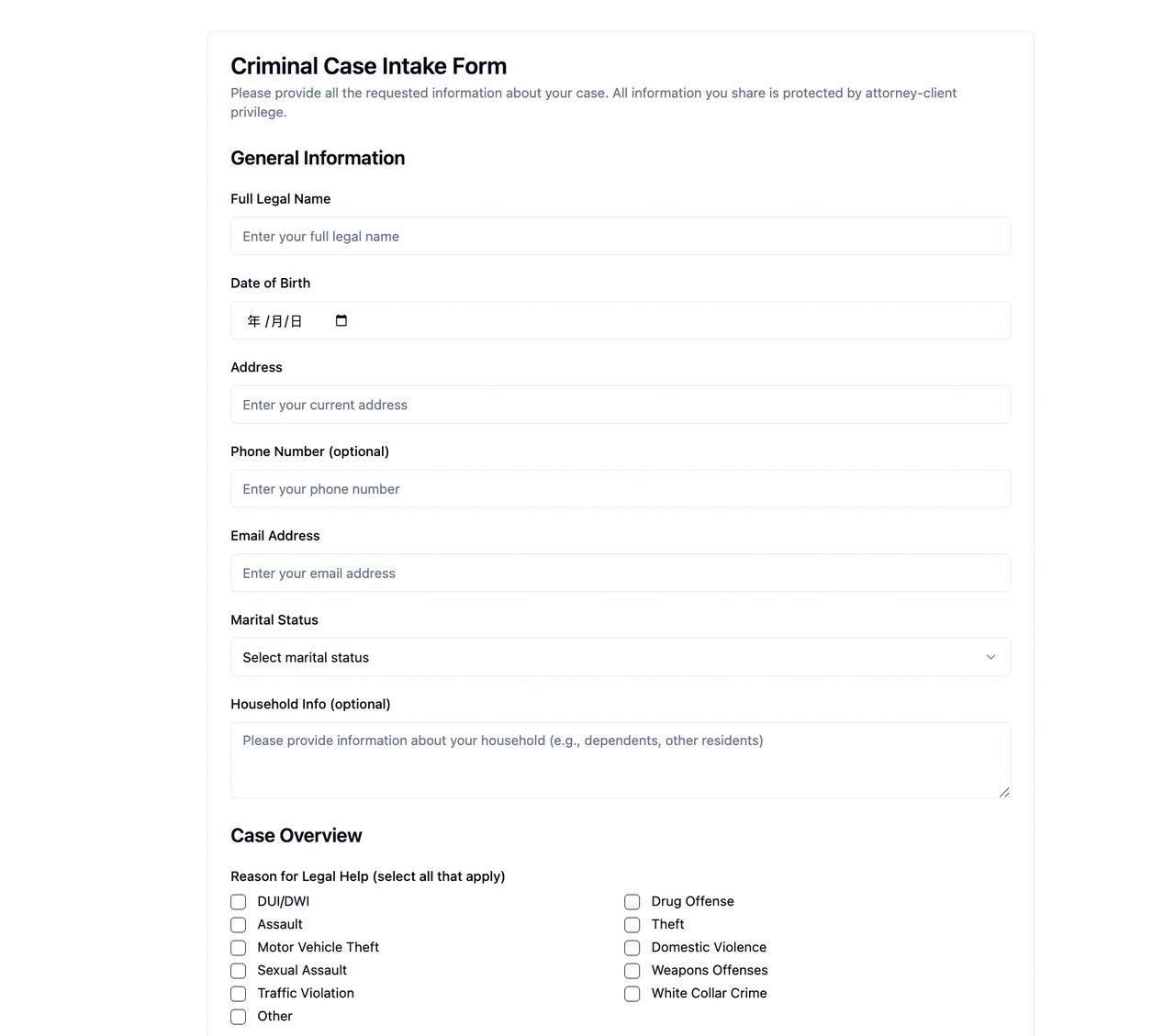
The system responds with personalized AI questions, filling gaps in real time
Clients can track their case and view submission history
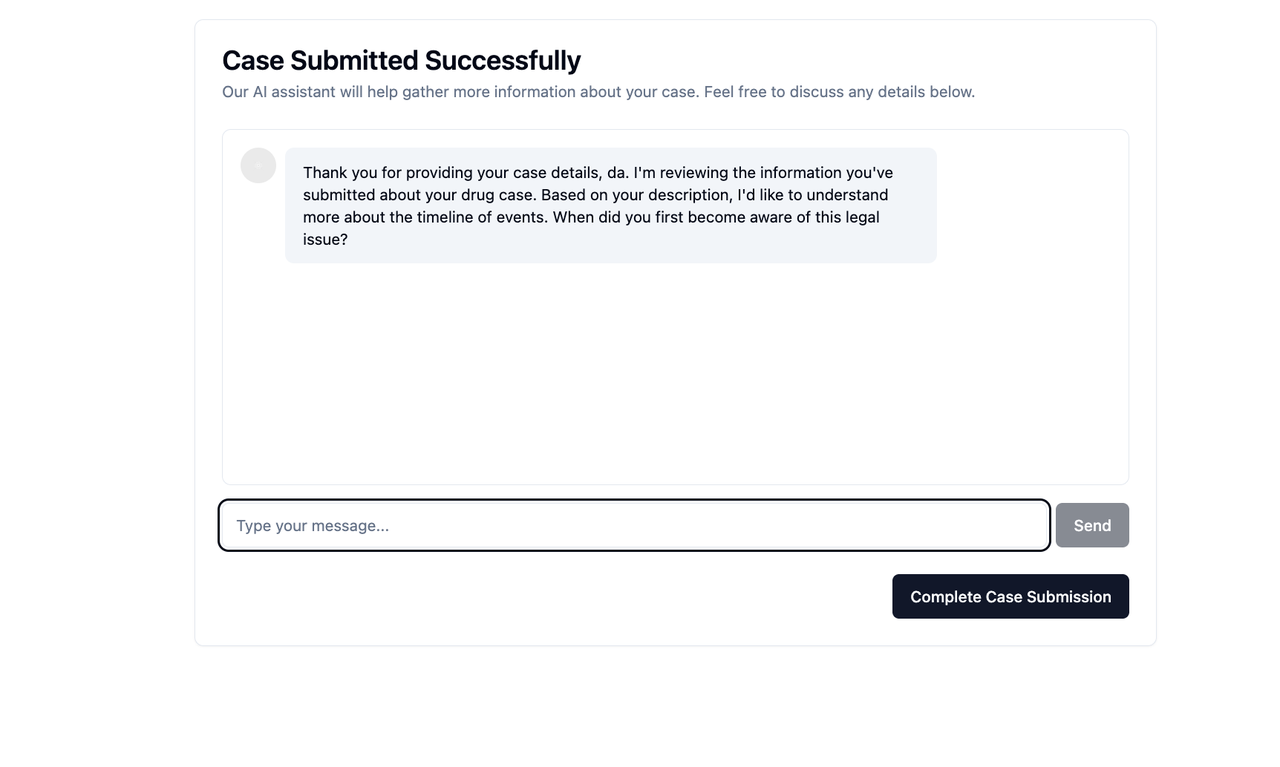
For Lawyers:
Access a secure dashboard of submitted cases
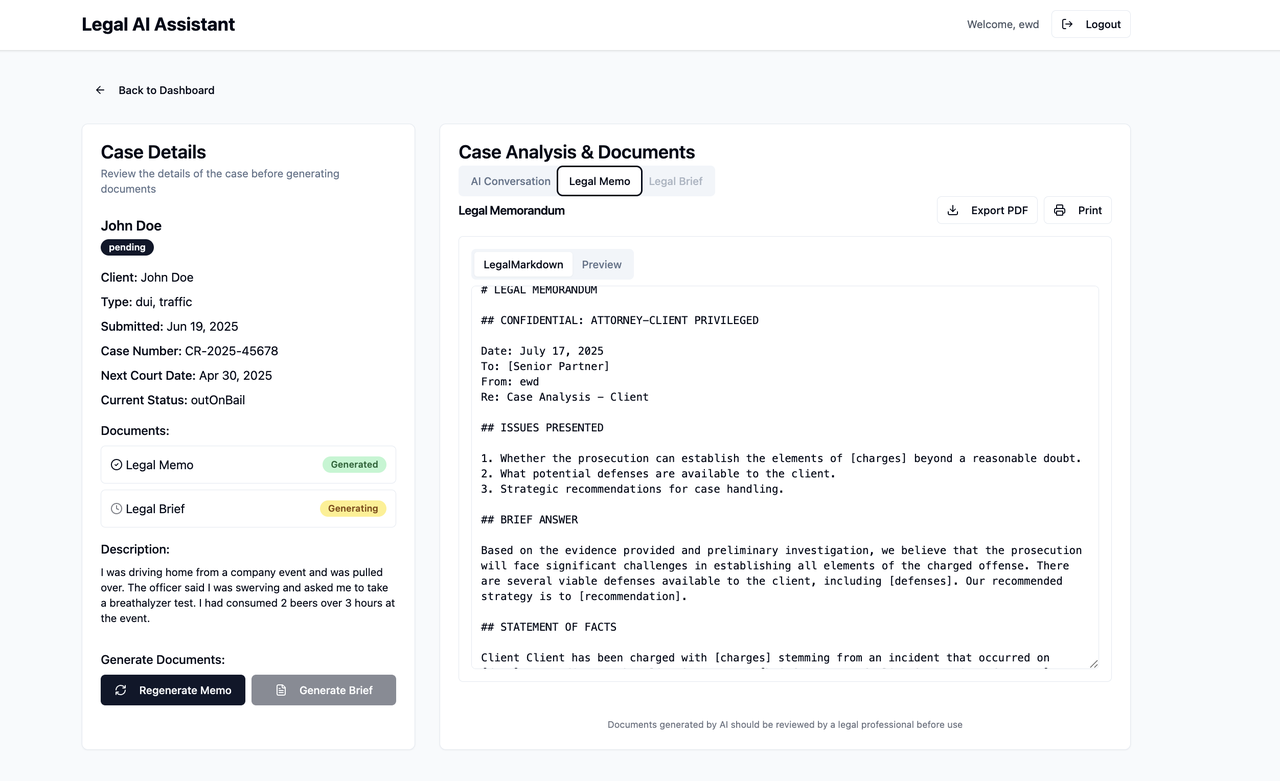
Open any case to:
View the full intake journey
Read AI-generated summaries
Ask follow-up questions via a chat-like interface
Trigger AI to draft legal memos or briefs using LegalMarkdown
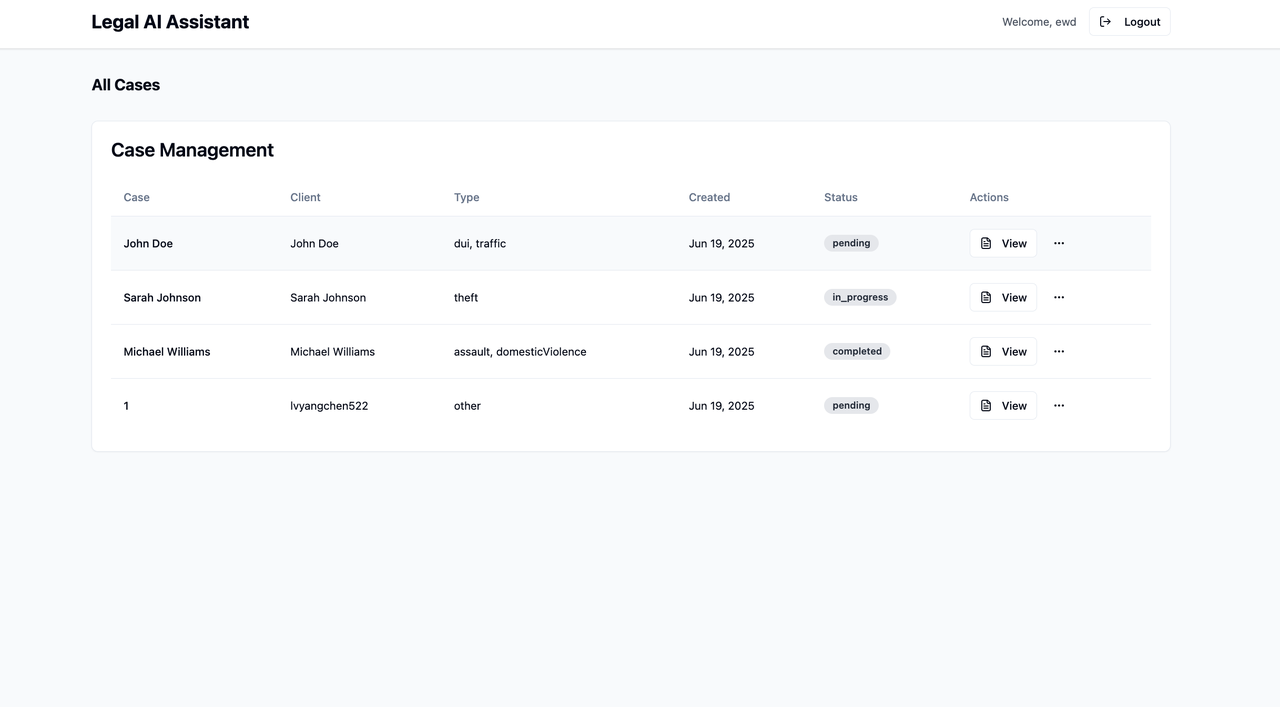
Edit, review, and export final versions to PDF
All of this — from logic to automation to document formatting — was done in Momen, powered by:
Actionflow: Orchestrates multi-step workflows in the backend — like dynamically triggering AI when a form is submitted, enriching data, and generating memos on-demand
AI Agents + Knowledge Base (RAG): AI doesn’t just guess — it pulls from curated legal knowledge to generate accurate, context-aware follow-ups and draft high-quality legal content
Database: Stores users, cases, AI-generated drafts, and role-based access rules — all securely and efficiently
Drag-and-drop UI builder: Creates both client-facing portals and invite-only dashboards for legal teams
Why This Beats a Chatbot or Plain GPT Integration
Most AI tools respond like chatbots — one message at a time. But this legal assistant needed something more powerful: asynchronous, state-aware, and event-triggered AI workflows. With Momen's backend workflows (Actionflow), Thomas was able to build an effecient and accurate logic.
Actionflow Does the Heavy Lifting
When a client submits a case, an Actionflow immediately kicks in:
It monitors the database for new or updated entries (like a completed intake form).
Once triggered, it sets the case status to
ai_processing.An AI Agent is triggered in the background to analyze the input and generate a draft memo or brief.
Built-In State Management
To keep everything organized and user-friendly:
The system tracks whether a case is still being processed by the AI (
ai_processing) or finished (processed).This status is reflected in the lawyer’s dashboard — so they always know if a draft is ready or still being generated.
“We didn’t want lawyers staring at a spinning wheel or half-finished text. With state tracking, the system waits until the memo is fully generated before showing it — just like a trained assistant would.”
Two Flows, One Goal
Chat-based clarification: Lawyers interact with the case through a conversational interface to ask follow-up questions.
Memo generation: Once enough data is available, a separate Actionflow triggers the AI to write a draft, update the database, and change the status — all without manual steps.
The Outcome: A Working AI-Powered Legal Platform in < 1 Week
In just under one week, Thomas turned his deep knowledge of legal workflows into a fully functional, AI-powered platform — without writing a single line of code.
MVP built in just 1 week
No engineers hired
Time saved per case: 2–3 hours
From messy client intake to structured case summaries to AI-generated legal briefs — the entire process is now automated, structured, and secure.
This is what happens when domain expertise meets the right tool. With Momen, Thomas didn’t have to learn to code — he just had to know what needed fixing. The platform handled the rest
What’s Next: From MVP to a Full Legal Workflow Platform
This MVP is just the beginning.
With the core intake-to-documentation pipeline working, Thomas is now planning the next wave of product enhancements — all driven by real legal practice needs.
Some of the questions he's exploring for future versions:
Can a client manage multiple cases at once? Many people face more than one legal issue at a time — how can the platform support parallel cases?
What other documents should the AI generate? Beyond memos and briefs, what about complaints, responses, or collaborative notes?
Can the AI learn from more context? Should lawyer-client chat logs, meeting summaries, or previous edits influence how documents are drafted?
What does collaboration look like? Can multiple lawyers co-review or annotate a draft before finalizing it? Should clients be part of that review loop?
How should visibility and access be handled? Who gets to see what — and when? Clients, co-counsel, reviewers — each with different roles.
These aren’t just feature requests — they’re real questions rooted in day-to-day legal practice.
And here’s the best part: every one of these features can be built on Momen — without starting from scratch.
Thomas doesn’t need to rebuild his product or re-architect the system. With Momen, he can keep evolving the platform as his users' needs grow.
This is what sets Momen apart: it’s not just a no-code MVP builder — it’s a platform where domain experts can build scalable products from day one.
Final Thoughts
Repetitive legal work isn’t going away — but with tools like Momen, legal professionals don’t have to do it all manually.
This project shows how non-technical founders can now build serious AI workflows without an engineering team. It’s not about replacing lawyers. It’s about letting them focus on what matters — and automating everything else.
FAQ
Q: How long did it take to build the MVP?
A: Just under 1 week — using Momen, Thomas was able to design, test, and launch a working AI-powered legal assistant without writing any code.
Q: Was any code required to make this platform work?
A: No. The entire platform — from logic and automation to UI and AI integration — was built visually in Momen, using drag-and-drop tools, Actionflow (for backend logic), and preconfigured AI agents.
Q: Can I build something similar if I’m not technical?
A: Yes. That’s the core message of this case: if you deeply understand your problem space, Momen gives you the infrastructure to turn it into a real, working product.
Q: What’s LegalMarkdown?
A: LegalMarkdown is a structured syntax used to format legal documents consistently. In this project, it powers AI-generated memos and briefs that are editable and export-ready.
